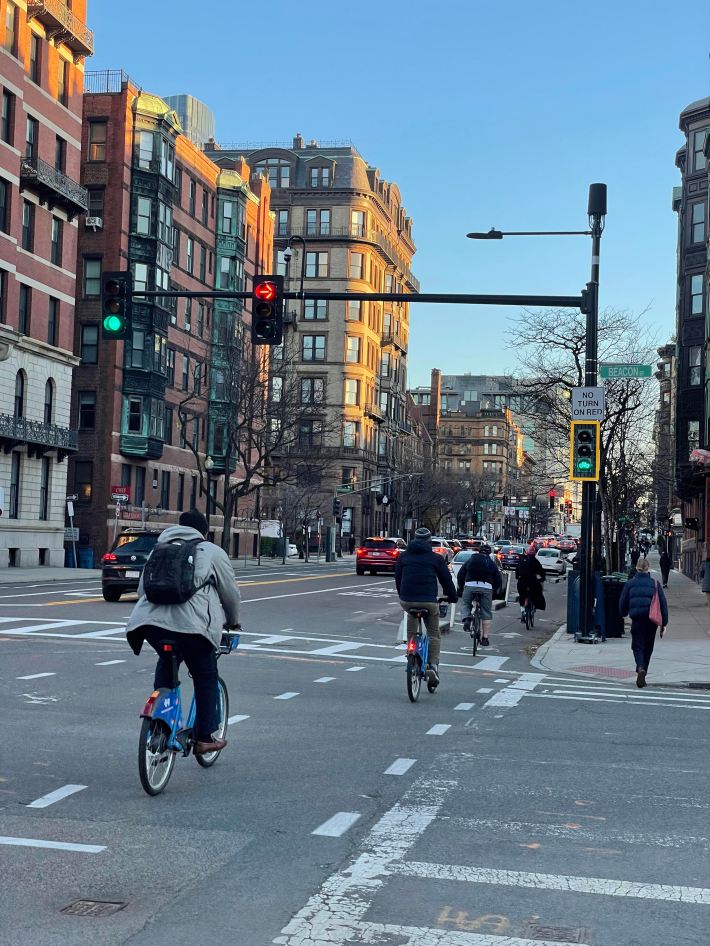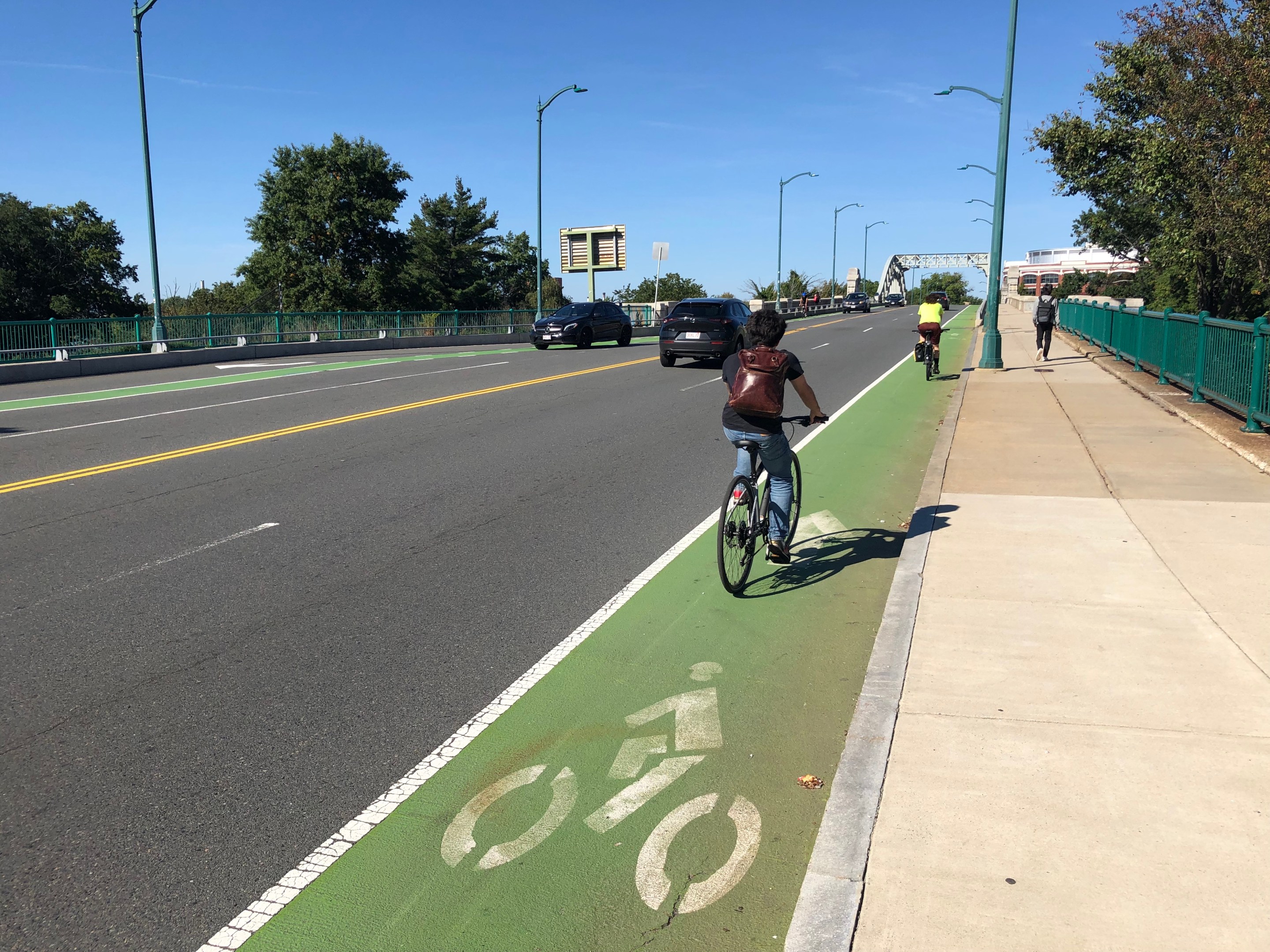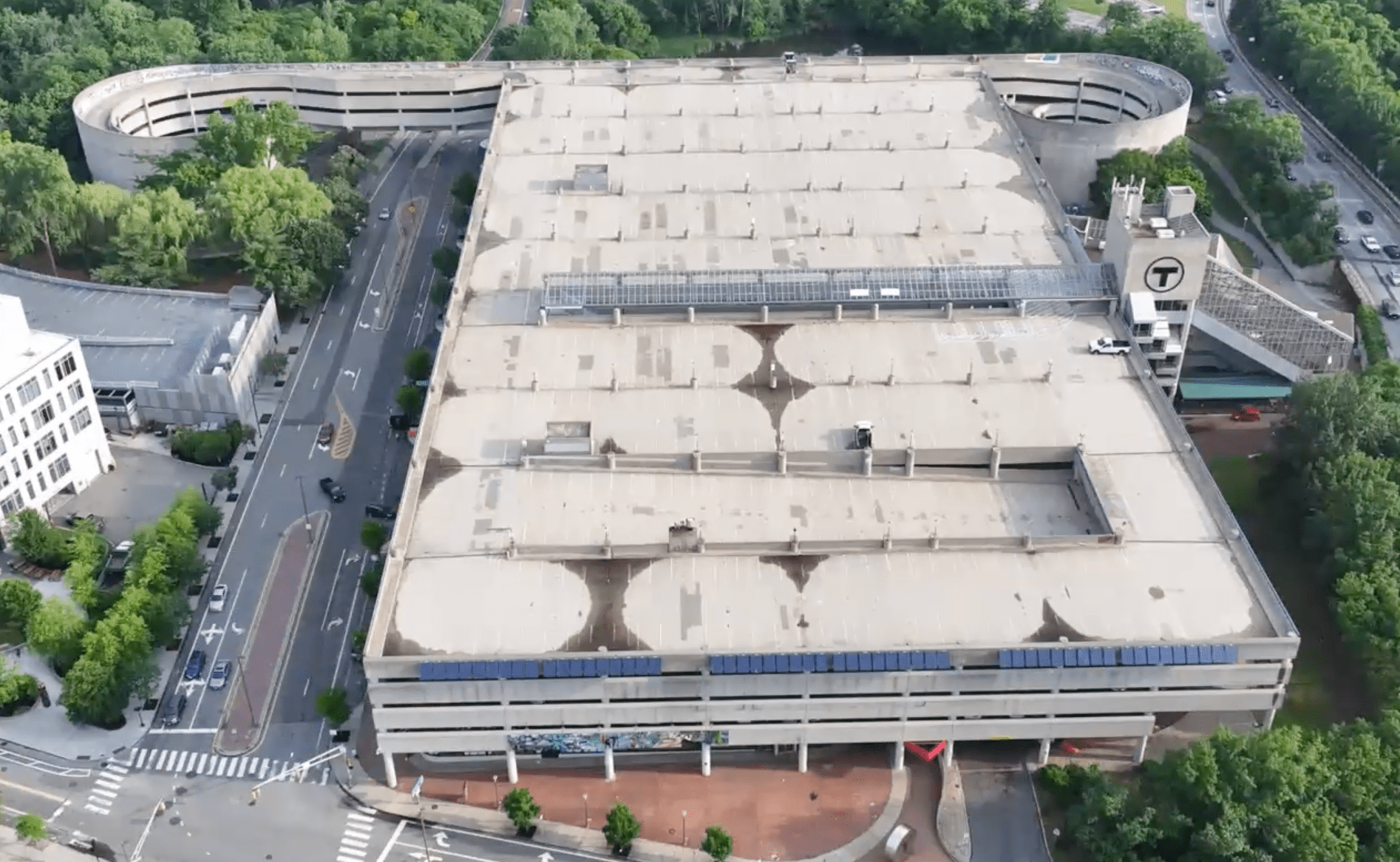In recent years, bike transportation advocates in Boston and Cambridge have made the case for successful protected bike infrastructure on the Longfellow Bridge, the Charles River Dam Road, and the Harvard Bridge, also known as the Massachusetts Avenue Bridge.
But further west, on the smaller Boston University Bridge, thousands of bike riders moving between Cambridgeport and the B.U. campus still share narrow, unprotected bike lanes that empty out into a chaotic rotary on the northern bank, and an intersection with an eight-lane-wide roadway on the southern bank.
"We got new protected bike lanes on the Harvard Bridge, so why aren't there protected bike lanes on the B.U. Bridge?" wonders Ken Carlson, a Cambridge bike advocate who's organizing Thursday's event. "It’s awful for pedestrians, it’s really bad for bus riders with massive delays, and it’s pretty miserable for people in cars, too."
During the City of Boston's fall 2022 bike traffic counts, over 2,200 people rode bikes across the B.U. Bridge each day, and bicycles constituted over 10 percent of the bridge's total vehicular traffic during the morning and evening rush hours.
To make those crossings safer, Carlson and fellow advocates from groups like the Boston Cyclists Union, Memorial Drive Alliance, MassBike, Cambridge Bike Safety, and other groups have come together to form what they're calling the "B.U. Bridge Safety Alliance."
On Thursday afternoon, the Alliance will meet with municipal and state officials to recommend a suite of low-cost, high-impact safety improvements for the B.U. Bridge.
The group has compiled a wish-list of relatively easy-to-implement changes to improve bike and pedestrian safety on the bridge and the adjacent intersections.
Among their requests:
- Signal separation for bike and pedestrian traffic: Currently, traffic signals on both sides of the bridge allow right-turning cars to drive through the adjacent bike lane and crosswalk while bikes and pedestrians are trying to cross. Instead, advocates argue that right-turning cars should see a red light while vulnerable road users are leaving the bridge, and a dedicated green light phase that activates once the crosswalk is empty, like this signal on Mass. Ave. in Back Bay:

- New flexible-post bollards to add additional protection for the existing paint-only bike lane.
- New raised crosswalks and higher-visibility bike lanes through the traffic circle on the Cambridge side of the bridge.
- A longer head start for bikes and pedestrians crossing Commonwealth Avenue. Currently, pedestrians get a 4-second head start before southbound cars get a green light, but that's not enough time for them to cross Commonwealth Avenue's three westbound lanes. Instead, advocates propose a "leading through interval," a 9-second signal phase when bikes, pedestrians, and through-running cars travelling across Commonwealth Avenue would all get a green light while turning traffic would be required to remain stopped.
Carlson notes that these safety improvements could be implemented before the end of this year, and with negligible impact to motor vehicle users (in fact, some of the proposed signal changes could actually reduce the amount of time people in cars would wait at red lights).
But advocates are also asking for one bigger-ticket construction project that could take more time and more funding to complete: a shared-use path connection between the B.U. boathouse and the bridge.
Currently, the Paul Dudley White bike path next to Memorial Drive dead-ends at the B.U. boathouse near Vassar Street in Cambridge, with an 800-foot gap where throngs of joggers, pedestrians, and people with bikes share a narrow sidewalk.
The B.U. Bridge Safety Alliance is asking the state's Department of Conservation and Recreation (DCR) to fix that crucial gap in the regional bike transportation network by moving the curb to create a full-width shared-use pathway that's capable of handling the high volumes of bike and foot traffic that use the riverfront pathway.
Earlier this summer, State Senator William Brownsberger has made a similar request of DCR, independently of the B.U. Bridge Safety Alliance.
In a draft letter to DCR that was shared with StreetsblogMASS, Sen. Brownsberger wrote that "west bound bike traffic approaching the rotary at the BU bridge is forced to ride in the opposing traffic bike lane along Goose Park (the mostly inaccessible greenspace that lies between the bridge and the B.U. boathouse) to make the connection from the Memorial Drive multi-use path to the Dudley White bike path... This dangerous situation can be mitigated by raising the bike facilities along Goose Park to the pedestrian path height... (to) permit space for two-way bike traffic."
The B.U. Bridge Safety Alliance is meeting with local and state officials at the bridge this Thursday to discuss its recommendations.
The group is hosting a site visit at 5 p.m., meeting at the northeastern corner of the Memorial Drive traffic circle at the end of Brookline Street.
Then, after walking across the bridge, the group will make a presentation at the CAS 132 classroom at 675 Commonwealth Ave., across from Warren Towers, at 6 p.m. Event details are available on Facebook.
The Alliance has also posted an online petition for these changes. Read it here.






